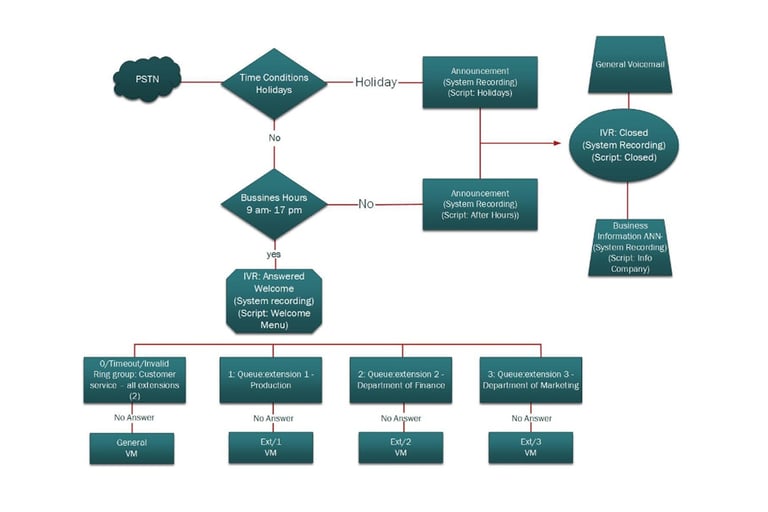Design and Build integrated VoIP Networks
Project description
Identify the purpose and primary functionality of Asterisk as a PBX and as an application development platform
List the functionality associated with a traditional PBX
Understand the history of Asterisk and its powerful open-source community
Define the operating system environments in which Asterisk is developed and supported
Describe the telephony connections which Asterisk supports and identify the Digium hardware needed to enable this connectivity
Identify the basic characteristics of analog and digital PSTN connections and how VoIP compares and contrasts with these
Install and run Asterisk from the packages available for download from Asterisk
Configure Asterisk to deliver basic PBX functionality, including basic call routing, voicemail, and directory services
Install and configure a number of VoIP devices
Integrate POTS with VoIP






Scenario
There are 3 parts to this project:
1. Design and planning
2. Deployment
3. Question and answer
Part 1 – Design and planning This part requires preparing an architecture design of the unified communications solution and a deployment plan.
OTS is a national organization within Australia with 7 retail and sales offices in Australian capital cities and a central office and Data Centre on the Gold Coast. All the sites are connected to the central office via VPN. In total OTS employs 120 people across the organization with the majority of the staff provided with remote access through either a dial-up or a virtual private network (VPN) connection.
Current technology
OTS does not currently have any unified communications technologies. The company uses a legacy PBX and all calls are made using the PSTN.
All servers are deployed in a VMWare virtualized environment. They have enough spare capacity in the VMWare virtualized environment to deploy any additional virtual servers they may need. All servers are attached to a Gigabit network.
Requirements
OTS has obtained a feasibility report in relation to migrating their telecommunications systems to a solution that uses a relatively low-cost SIP trunking service provided by an ITSP. They have decided to proceed with the migration as it will provide substantial savings on their telephone costs. They will start with an implementation of IP telephony at their Gold Coast office. This means that they will replace their current PSTN lines with a SIP trunk, replace their legacy PBX with a VoIP PBX, and replace their legacy handsets with SIP-compatible handsets.
I have been given the task of designing the solution. The design and implementation plan must provide for the following:
An IP telephony solution that will:
1. Use SIP trunking
2. Use SIP-compatible handsets
3. Provide flexibility to expand and link to other sites
4. Provide call parking, call queuing, voice mail, ring groups, and an IVR service
5. Achieve these outcomes with minimal cost
Task 1
Research the following VoIP technologies.
• Asterisk
• ShoreTel
• Cisco
Task 2
Write a description of the solution. Assume that I have chosen Asterisk as the solution.
Task 3
Compile an inventory of hardware and software components. Including the recommended hardware requirements for an Asterisk/FreePBX installation for an organization of this size.
Task 4
Prepare a work breakdown of the deployment plan.
Task 5
Write a post-deployment test plan.
Task 6
Create a drawing of the solution using Visio. Include all physical and virtual components
Part 2 – Deployment
This part requires deploying an IP-private branch exchange (PBX) solution. I was provided with:
1. An Asterisk/FreePBX distro ISO file
2. A PC with Internet access
3. Access to a VMWare VSphere infrastructure host in which you can create new VM’s.
4. Asterisk and FreePBX installation and configuration documentation
5. IP addressing scheme, extension numbering scheme, and DID
6. Head office trunk name and password
Part 3 – Question and Answer
Questions?
Whether you’re curious about features, or vital information, we’re here to answer any questions.


